Use 'Print preview' to check the number of pages and printer settings.
Print functionality varies between browsers.
Printable page generated Friday, 21 November 2025, 3:32 PM
Inclusive environments: people, place and play
Introduction
Week 1 considered what can affect our learning, how we can prepare ourselves for learning and we also looked at some of the language associated with additional support needs (ASN). This week looks in more detail at how to develop inclusive practice so that children with ASN can be full and active participants in early years settings.
Scotland is committed to giving as much opportunity to every child to ensure they reach their potential. Practitioners in early years settings have a responsibility to ensure that the setting is inclusive for all children.
But what do we mean by the term ‘inclusive environment’? Some children may have no apparent barrier to accessing all the experiences that nursery has to offer but something may be causing them to feel left out. There may be something or someone that is creating a barrier to them being able to join in – exploring these issues is the focus of this week’s session.

The content of Week 2 links to module learning outcomes (LO) 2 and 3:
- LO2 Understand the value of inclusive practice, including the importance of celebrating the strengths and opportunities that children who need additional support bring to a setting.
- LO3 Explain the need for all staff to take responsibility to support children who need additional support (not just those with specialist training).
By the end of Week 2 you will be able to:
- understand the difference between access and inclusion
- understand how unconscious bias might affect what we say and do
- take an inclusive approach to planning food
- know what is important in ensuring children gain equal access to outdoor play experiences and the role of the adult in supporting inclusive play.
Continue to 2.1 The difference between ‘access’ and ‘inclusion’.
2.1 The difference between ‘access’ and ‘inclusion’
Inclusion can frequently trigger thoughts and images of children with physical disability. Some children will arrive at an ELC setting with physical access requirements. The journalist Frances Ryan (2018) commented ‘it isn’t my use of a wheelchair that makes my life disabled, it’s the fact not all buildings have a ramp’. This comment links to the medical model of disability discussed in Week 1, meaning that it is the presence of barriers such as access to buildings that can disable people who have mobility difficulties.
Clearly, it is vitally important that a child who uses a wheelchair can access all parts of the building and this may require adaptations to be made. However, gaining access is one thing; but what about feeling included in a setting?
Interview: working with children with disabilities
Edinburgh-based playworker and artist Max Alexander writes a blog ‘Play Radical’ where he reflects on his experience of working with children and young people who are disabled and/or need additional support for learning.
Here he reflects on the different meanings of inclusion and access, and how he interprets them on a day-to-day basis in his work with diverse groups of children.
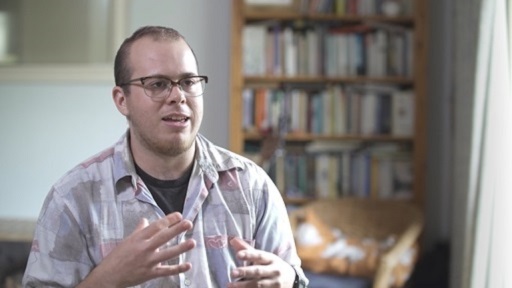
Transcript: Video 2.1 Max Alexander talks about access and inclusion
Activity 2.1 Exploring idea of inclusion and access
Listen to more of Max’s reflections on disability.
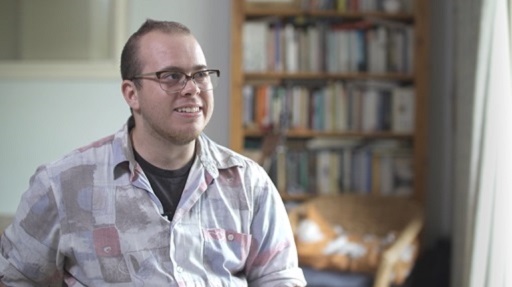
Transcript: Video 2.2 Max Alexander’s reflections on disability
Compare Max’s explanation with your own experience. What do you think has influenced your understanding of disability and inclusion?
Discussion
Max describes how he has been conditioned to think about disability through our everyday culture. This is likely to be through school experiences, family expectations, media representations of disability and the everyday experience of being or not being in contact with individuals with disability.
Max describes unconscious bias. We may hold a considered opinion gained through reflection and learning but sometimes our brains make quick judgements about people and pay more attention to how we may have been conditioned to think over time rather than our conscious, considered opinion.
The more we are aware of our potential for prejudice or bias, the more we can be sure that we don’t act on it.
This section has explored the difference between ‘access’ and ‘inclusion’ in relation to disability. However, as discussed in Week 1, inclusion is not just about disabled children. The next section explores inclusion in broader terms.
2.2 Unique individuals in a shared community
An early years setting is a community of children and adults sharing their environment and resources in the same space. You need to ensure that everyday activities that are part of being in a community, such as eating together, meet the unique needs of all children and that they feel included.
Consider the following activity, which shows how accommodating additional needs regarding food and eating can become part of everyday practice.

Activity 2.2 Making inclusion possible
Feedback
To summarise, there isn’t one right answer but several different approaches that can be taken. What is important is that Alistair works with the children and other practitioners, as well as other significant staff such as the cook (if there is one) and parents to identify what he can do to ensure the party is a happy celebration for everyone.
You may well have thought of other ways that Alistair could approach planning the party.
The next section looks at play and looks at ways that you can make play as inclusive as possible for all children in your setting.
2.3 Inclusive play
This section looks at how you can make play as inclusive as possible for all children by using ‘cues and mirroring’ in your practice to build relationships.
Building relationships
The previous party case study illustrates how knowledge and understanding of individual children needs to influence everyday practice. We can only build this knowledge if we develop positive relationships with children and their families where we tune into their experience of the world.
We can do this in different ways. We can talk to children and their families, we can observe children’s interactions and play, and we might join children in their play, but it is important to bear in mind that not all children will want an adult to be involved in their play.

Play cues and mirroring
Children can invite others to join in play by giving cues or mirroring actions. This is a hint or invitation to join in and play, and it might be verbal or physical. Physical cues can include children using facial expressions, eye movements or gazing at an adult and waiting for a response. The cues can sometimes be very subtle. It is important to be aware that not all children will give play cues in this way. For example, children with autistic spectrum disorder may not want to play with others but it is still important to try and engage with them.
Joining children in play might be something adults choose to do in response to a child’s play cue. Responding to a play cue – such as joining in with a game of peek-a-boo that a child has started – is a way of building a trusting relationship.
When you respond to a child’s play cue as an adult, you are making it clear that they are leading the play.
Examples of play cues include:
- a tap on the shoulder and running away laughing
- making a funny face at someone
- hiding and peeking out (peek-a-boo)
- throwing a ball to someone
- moving closer to someone with things to play with
- allocating roles, e.g. ‘you can be the dragon’
- making space in a group for someone else to join.
(Adapted from Casey and Roberston, 2019. You may wish to look at the Loose Parts Toolkit – see the link in Figure 2.4’s caption for more information.)
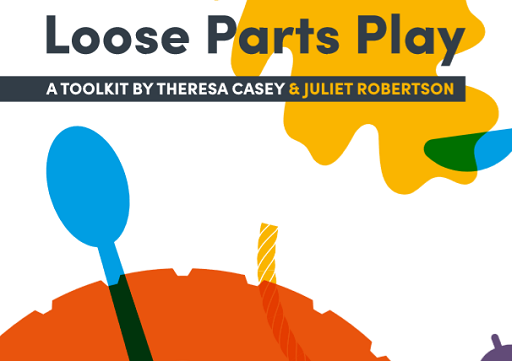
Children have different ways of communicating through play. Tuning in to each other’s different play cues and responding appropriately can be challenging for some children. Children with a disability or with limited verbal communication might find it more difficult to interpret or initiate play with others. Adults can support children to notice different play cues and find appropriate ways to respond.
Extension activity
If you would like to see an example of how a dancer and the children play and dance together, partly through mirroring (copying) each other’s movement, please see the extension activity at the end of this session.
Playing outside
Access to outdoor play and learning experiences is vital for all children. It is important to consider whether your setting is ensuring that everyone can go outside to play and be outside in all weather conditions.
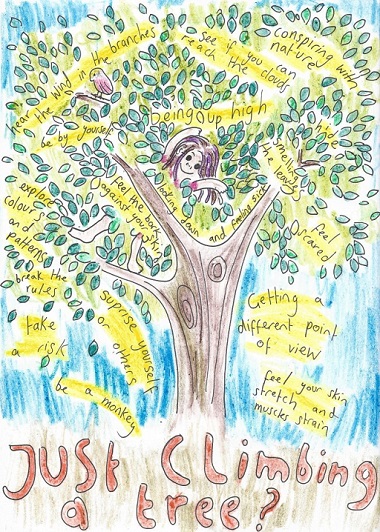
Not everyone enjoys the wind and rain. If an adult is providing one-to-one support for a child, it is important that they are prepared to respond to the child’s preferences – especially if this means being outside in all weathers.
Activity 2.3 Tuning in to the unique child
In this audio you will hear a parent and key worker talking about Eilidh, who loved being outdoors and spent a lot of her time at nursery playing outside. While you listen, think about how Eilidh’s family and nursery made it possible for Eilidh to enjoy being outside.
Listen to Liz and Pamela and note down the key influences on Eilidh playing outside.
Transcript: Audio 2.1 Liz and Pamela on Eilidh’s outside play
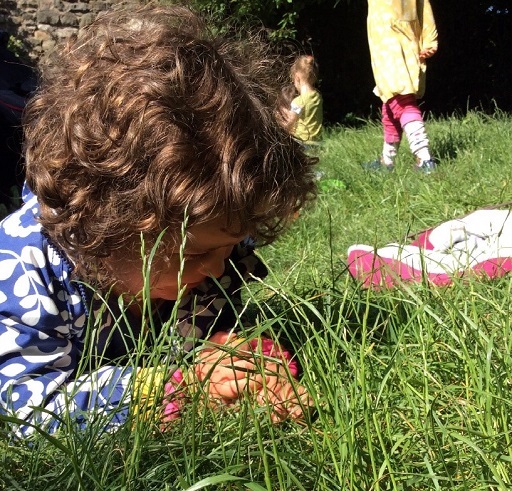
Discussion
Some influences that Liz and Pamela mention are:
Eilidh loved being with other children and wanted to be where they were, which was often outside.
A confident, outdoor-loving family with an older sibling who loved being outdoors.
A staff team who enjoyed spending time outdoors and valued it for children.
Availability of staff and one-to-one support.
A space and resources that were physically accessible.
Including all children in outdoor play
How confident are you that all children are able to access outdoor play when they choose to? How do you support the additional needs of children who are deaf when playing outside? For example, it will be important to consider their safety when they can’t hear what is being said. They may need to use a hearing aid to help them to hear voices, or a visual aid in case of an emergency.
You might find that thinking about what you need to do to make outdoor play more accessible to one child has the effect of making it more accessible and inclusive for all children.
The next section looks at your role in relation to reducing conflict during play so that it is as inclusive as possible for all children.
2.4 Play conflict and the role of the adult
Sometimes our different ideas about play and our different ways of communicating with each other can bring children (and adults) into conflict. The final activity in this section encourages you to think about the role of the adult in supporting children’s relationships and interactions.
Activity 2.4 Accessibility and play
Play conflict scenario
ELC practitioner Ania has created an accessible space for playing with play dough.
A table is available where children can sit or stand to use the dough. The dough, made by the children with Ania’s help, has been coloured green to create a colour contrast with the beige working table. Rosewater has been added to add an interesting smell. Ania has placed a selection of rolling and cutting tools on the table, along with small items such as shells, string and twigs and pinecones.
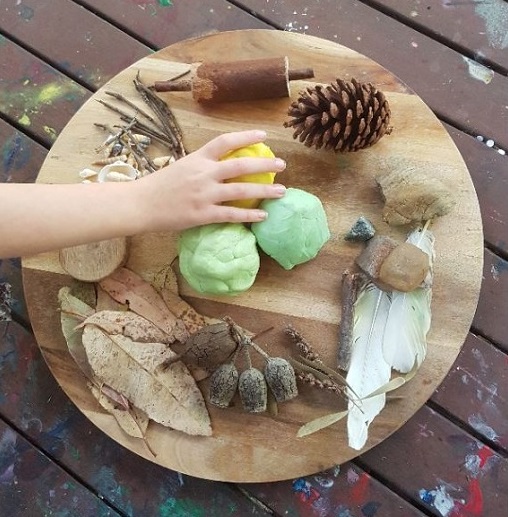
Ahmed and Sammie are playing with all the dough and building what looks like a nest. Nina approaches the table. Nina takes some shells and twigs out of the basket and arranges them. Every now and then Nina stares at the children with the play dough. Suddenly Nina snatches some of the dough away from the two children playing together and throws it on the floor. Ania intervenes and tells the third child that they are not allowed to snatch and asks them to play elsewhere.
Ania has taken time to think about the accessibility of this play resource. It is multi-sensory and offers open-ended play; the resources she has included indicate that play dough does not need to be rolled and cut in imitation of cooking. However, within a few minutes a child has been excluded from using the space. How could Ania ensure a more inclusive experience?
Make a few notes on Ania’s role in:
- observing how the space is used
- supporting conflict resolution
- helping children to pursue their play needs.
What would you do differently?
Discussion
The play dough is a limited resource that needs to be shared and looked after. Children may need to be supported in how they make use of it. This is not about enforcing ‘play dough rules’, but about discussing how to share and care for the play resource together. Sometimes our attachment to a resource might mean emotions run high – for adults too. It can help to remind ourselves, as well as children, to take a moment to think before we speak or act.
Some practical tips that Ania might consider doing:
- Talk to the children about how it might be fair to leave some play dough unused so other friends could join in.
- Observe interactions at the table. The two children playing together did not interpret the third child staring at them as a request for play dough or to join in the play. This might be a subtle play cue. Adults can give words to a child who is not vocal. You might say: ‘I can see that you are looking at the play dough. Would you like to play with it?’ You can then model a way of asking to play: ‘You could ask Ahmed and Sammie to share some with you. Ahmed, Sammie, can you see that Nina would like to play?’
- Be ready to support the children. Perhaps Nina is often impulsive or physical in her response to situations? Perhaps Nina is not able to express herself clearly using words or gestures, and becomes frustrated? Ania could welcome Nina and talk to her about the play dough and discuss what the other children are doing.
- Help the children to get back to their play. If Ania missed these earlier opportunities to intervene she could explain that it is not OK to snatch the play dough and could model how to ask to share or how to use the play dough in this space. That way a child is not excluded from play because they lacked support to gain access to the play.
- Be curious about Nina’s play needs. What is Nina communicating with her actions? Ania needs to find out what is most important to Nina. Is it finding a way to play with others? Is it gaining adult attention? Is it a need for whole body physical play that is met by throwing the play dough? This is not easy to answer from a single observation but is the kind of understanding that can be built up over time.
While Ania might find a way to ensure this play resource is inclusive, it is important to consider it in context of the whole nursery. Play dough is an indoor activity, often at a table. It can involve whole body movements as well as fine motor skills. Compare it to an activity like playing with mud outside. Does the nursery environment welcome large body movements and messy engagement with materials? Perhaps this is what Nina is looking for?
You may have wondered why this scenario did not state whether any of the children have ASN. This type of interaction is quite common for children of any age and stage, and may result from a range of reasons. You may not always have the knowledge and understanding of a child’s background or disability, but because you need to support each unique child you need to be prepared to observe, learn and intervene sensitively.
Summary
In Week 2 you have explored the value of inclusion in relation to access, food and play, as well as identifying some practical examples of how you can include children with additional needs. You have also looked at some examples of how to make play indoors and outdoors as inclusive as you can for all children.
Reflection activity
Use the learner journal that you saved from Week 1 to make notes about this week’s content and consider how it can positively impact your practice to improve the experience for children with ASN. (You can also type into the box below, and then copy and paste it into your learner journal.)
After you have made your notes, save the learner journal file to use again for the remainder of the module.
Reflection table for Week 2
| Source of knowledge | |
| Key point | |
| How has this made me think? | |
| So what have I learned? | |
| Next steps: what can I improve or what more do I need to know? | |
| Next steps: what improvements can I make to my practice? |
(Adapted from Appleby and Hanson, 2017)
Next week
In Week 3 you will have the opportunity to talk to other learners through an online forum and/or webinar.
Now have a go at the Week 2 practice quiz.
Extension activity
Extension activity – Starcatchers
This film is part of a project by Starcatchers, a Scottish arts and early years organisation.
Watch how a dance artist and a young child with autism become physically in tune through moving together. In this example, the adult tunes in to the child’s body movements and finds news ways to be in communication.
They play together through mirroring movement. The ELC practitioners discuss the impact of this type of physical play on children’s wellbeing.
The film documents part of a project called ‘Moving Matters’, which takes place in an integrated specialist service for children aged two to five. It has a range of playrooms including one for children with additional needs. It has an integrated playroom and offers the opportunity for children to integrate throughout the day.
Watch from 1 minute 48 seconds onwards. (Hold the ‘Ctrl’ key and click the left mouse button to open in a new window.)
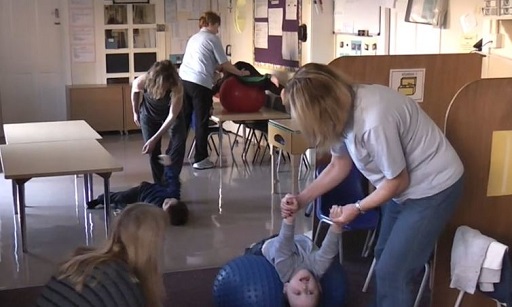
Video 2.3 Starcatchers – playing together (4 minutes 54 seconds)
Did you notice any other mirroring in the film?
Have you mirrored a child’s gesture or movement in play? Perhaps you have responded to a play cue by copying a funny face or a dance move, or by playing peek-a-boo with a baby or toddler?
Have you noticed children mirroring each other in their play?
Make a note of situations where you have played with a child by mirroring their actions. Doing this is especially helpful for non-verbal children and this is a useful way to attract their attention.
What impact did this have on your relationship?
Discussion
Being able to understand children’s different play cues means that you can support children to understand and value each other’s different ways of communicating by playing and interacting.
When you mirror a child’s playful movement or sound is a way of showing a child that you are paying attention to them and value their expression.
Thinking about children’s unique play helps us to remain curious about how children see the world. It can help us work against any unconscious bias of our own or against any negative labels that others have placed upon them.
References
Further reading
Acknowledgements
Figure 2.3: Just climbing a tree by Max Alexander